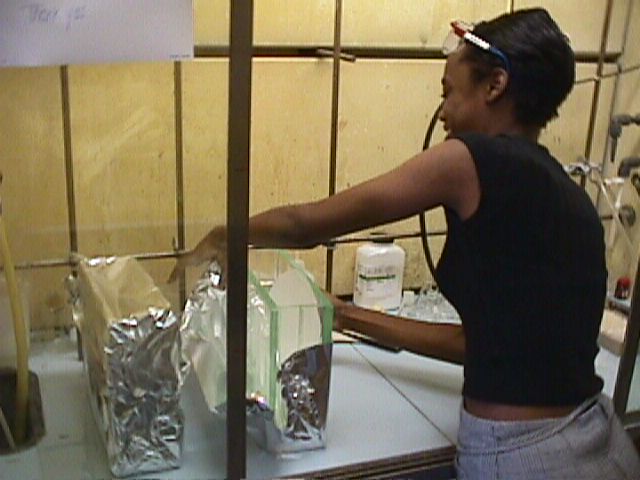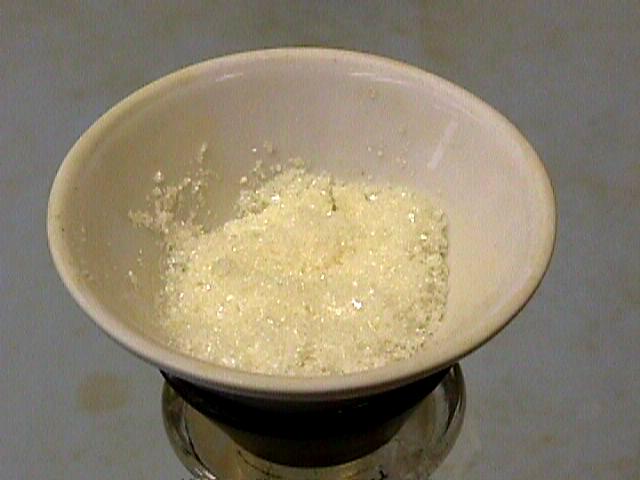| RESEARCH PROCEDURES | Dana's research will include the synthesis of an organic chiral diradical molecule where both racemate and pure enantiomer forms will be produced. The diradical molecules will be ligated by metal atoms to form organic complexes. It is the formation of the metal/organic radical that produces the magnetic properties. The goal of the research is create these complexes where the metal contains unpaired electrons yielding high spin materials | |
|
|
Here is Dana working in the fume hood. She is
synthesizing the precursors for her diradical molecule.
The stable diradical molecule will then be bound to the metal atom. |
|
|
|
||
| The products of Dana's synthesis steps are analyzed by performing a Thin Layer Chromatography. A thin film of silica gel is spread over a small piece of glass and blotted with a drop of her products. The bottom edge of the glass is placed in a solvent and the products are allowed to separate by mass and affinity to the silica. |
|
|
|
|
||
|
|
||
| Here is a sample of the crystals Dana was able to obtain from her reactions. These crystals may have the properties the lab is looking for. | ||
|
|
||
|
|
||


